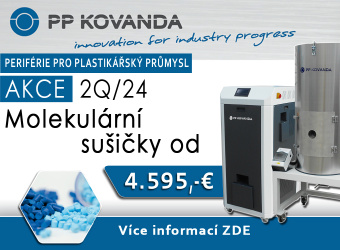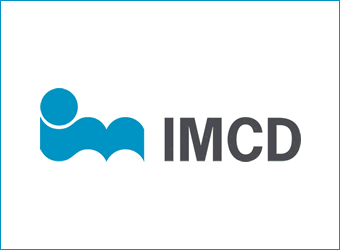Trhové ceny komoditných plastov týždenne
Uvádzame tu trhové ceny rôznych typov komoditných plastov PE-LD, PE-HD, PP a PS v strednej a východnej Európe s oneskorením 5 týždňov. Údaje spracoval náš partner myCEPPI.
Zaujímajú Vás aktuálne ceny komoditných plastov? Objednajte si túto službu Týždenné ceny komoditných plastov u nás v redakcií.
Ceny na týždeň 46/2020
The prices of “commodity” polymers were affected by the following factors last week:
- BRENT oil price 42.78 USD/barrel, slightly increasing prices
- NAPHTHA (European) 357.60 USD/t, rising prices EUR/USD: 1,1833, a stagnant Euro
- The zloty and the forint and the Czech koruna continue to strengthen,
- There is Russian PE again in the Baltics and Poland,
- SABIC's Wilton PE plant shut down (400 kt/year capacity),
- LyondellBasell's LDPE plant in Aubette restarted (320 kt / year capacity)
- Karpatneftechim is under maintenance, HDPE production also stopped, (107 kt/year capacity),
- Worsening COVID-19 situation in Central Europe, growing uncertainty
- Strengthening “year-end demand” is expected in November.
The polymer market does not appear to be showing the usual declining demand in mid-November. Demand for polyethylene grades, including LDPE, is particularly good in Central Europe, with a clear shortage of LDPE in Hungary, Slovakia and Romania. The contracted customers received the forecast quantities, but no LDPE is available on the free market (spot) at all. One of the reasons for this is that customers point to the shutdown of SABIC's Wilton plant. Another important reason is that Central European producers expected weak demand in November-December, with some of them also exporting to the Far East, thereby reducing the Central European commodity base. The third important reason is that demand in both Western Europe and Russia is quite good, which is why fewer goods arrive in Central Europe from there as well.
On the PP line, an increase in demand can be observed as well as a contraction in supply. Demand for ber grades is growing steadily in Western Europe and the world market, in parallel with the unfolding second wave of COVID-19. This may be the reason why the largest European PP producer last week made a € 50 price increase for the second half of November. Although the other producers have not (yet) followed, an increase in the bottom of the price band can be observed, not only for PPH Raffia grades but also for PPC grades. As well as a sudden narrowing of supply.
The supply of polystyrenes is limited for GPPS, HIPS and ABS. Although the news has risen that supply is also shrinking in the case of EPS, this is not perceptible due to the usual drop in demand at the end of the season.
Although it is too early to talk about December prices, it is very likely that there will be no price reduction for olen monomers due to oversupply in the market. In the case of styrene monomer (SM), due to tight supply and good demand for polystyrenes in Asia and Europe, a signicant price increase of up to € 50 is conceivable, which will also have a clear impact on PS prices.
Polyolefin grades
In the second week of November, LDPE prices ranged from 890 to 990 EUR/t. They started upwards, with both the bottom of the band and the top of the band rising by € 30. But there was also an example of a € 50 price increase in the Baltics. Supply is short. Medium and small converters who have switched to spot purchases in the last 2 years are now in trouble. There are examples of converters buying from each other. A signicant expansion of supply is not expected this year. The supply will also be tight in the rst half of December. Therefore, further price increases, whether during the month or in December, are not ruled out. The solution will come from the Christmas break, when demand is falling anyway. However, there will now be no commodity base for the usual year-end stock replenishments. Russian sources also appear to be “clogged”, particularly in the Baltics, as Kazanorgsintez is struggling with ethylene supply problems due to the construction of the new cracker, while Chinese demand is also extremely strong.
In the second week of November HDPE prices were in a range of 820-950 €/t in Central Europe. Apparently they have not changed, however, the bottom of the price band applies to large-scale Polish converters and materials of Russian origin. Prices of polymer producers in Western and Central Europe are signicantly higher, typically close to 900 €/t. By the end of last week, HDPE producers in Central Europe had already sold everything they planned. Availability will continue to decline in the second half of the month. Demand increased further for FILM and BM grades in particular. Typical transaction prices ranged from 830 to 920 EUR/t last week. However, a price increase for spot items in the second half of the month is not ruled out.
In detail
HDPE BM: 840-940 €/t,
HDPE IM: 820-950 €/t,
HDPE FILM: 820-950 €/t,
In the second week of November, HDPE (100) prices ranged from 990 to 1,060 EUR/t, they remained stable compared to last week. Demand is still good. In the second week of November, LLDPE C4 prices were in a range of 840-950 EUR/t. Prices rose by € 20- 40 at the beginning of the month, but minor corrections were observed last week. Large converters (Cast Film) continue to buy outside the above price range of around € 800/t. Supply is good, demand is in line with the season.
In the second week of November, mLLDPE (C6) prices were in the price range of 880-1,160 EUR/t. They did not change compared to last week. The supply is good, Western European producers are offering new quantities in Central European markets.
In the second week of November, typical PPH Raffia prices ranged from 870 to 990 €/t, depending on the producer and grade. Prices have clearly started to rise. Demand is strengthening in Western Europe and this is also affecting prices in Central Europe. The price of materials of Russian origin is also rising steadily due to good demand from Russia and the Far East. Availability, free stock is no longer available at Central European producers, so price increases in spot markets are very likely, which means that the lower value of the price range will reach € 900.
In the second week of November the prices of PPH IM non-special grades with low and medium ow melt index were in a range of 850-950 €/t last week in Central Europe. They have not changed compared to October. The price of products with a high melt ow index was in a range of 900-990 €/t, the lower value of the price range increased by 20-30 € compared to the previous week. The cheapest prices are still in Poland. The level of demand is average. Although Central European producers had a roll-over in their monthly prices, in the spot markets in the second half of November, a smaller price increase of € 10-20 is expected due to tight availability.
In the second week of November typical PPC prices were in a range of 940-1,070 €/t in Central-Europe. Apparently they have not changed, only the price band cap has risen by € 30. It can be observed that the supply is narrower than it was usual in the last six months. Extremely affordable spot deals are worn out. Even big “price hunter” companies can’t shop near € 900. One reason for the tight supply is Braskem’s transport problems from Schkopau, and the other is that Western European companies are also throwing less spot material into Central European markets. However, there is less Far East (South Korean) material on the market. The typical transaction price range was 970-1,040 €/t. Demand is strengthening, mainly due to the “threatening” spot price increase.
PPR prices for the second week in November were in a range of 990-1,090 EUR/t last week. They did not change compared to last week. Demand is weakening according to the season.
Polystyrene grades
EPS prices were in a range of 1,010-1,090 €/t last week. Less exciting was the fact that some traders and converters reported supply problems. However, these were only individual cases. The supply is satisfactory. This has been reported by both major EPS converters and polymer producers. Demand is weakening according to the season. The construction industry is slowly going on vacation. However, it cannot be ruled out that prices will rise in December due to a possible increase in SM prices. However, due to declining demand, the potential EPS price increase will not reach the rate of SM price change. This only negatively affects companies that wanted to shop from “cheaper” stocks at the end of the year, preparing for the rst quarter of 2021. A possible price increase in December is no longer likely to continue in January.
In the second week of November, GPPS prices were in a range of 950 - 1,100 EUR/t. The cheapest prices were in Poland, from sources outside Europe. HIPS prices were in a range of 1,000-1,200 €/t. Availability is tight especially from thermoforming grades. The availability of European and Central European producers is poor for both GPPS and HIPS. Demand is still good. Respectively, due to the limited availability, it is “conserved” and carried over to the following months - December-January. Large Western European producers are also rescheduling the fulllment of November orders to December. Thus laying the foundation for a price change following SM in December, a likely price increase.
In the second week of November the natural ABS price range was 1,500-1,740 EUR/t. The supply is extremely tight, now not only from products with higher but also lower melt ow index. Orders, like GPPS/HIPS, will be postponed to December and January. The reason for the good demand is twofold: on the one hand, the extremely good demand in Asia, and on the other hand, the buoyant European demand. The recovery in demand is due to the replenishment of inventories reduced in the second quarter.
| Typ | Cena |
|---|---|
| HDPE blow molding | 878 € / t |
| HDPE film | 882 € / t |
| HDPE injection molding | 876 € / t |
| HDPE pipe (100) | 1030 € / t |
| LDPE film | 919 € / t |
| LDPE general purpose | 914 € / t |
| PP co-polymer injection molding | 1000 € / t |
| PP homo-polymer fiber | 939 € / t |
| PP homo-polymer injection molding | 936 € / t |
| PPR | 1055 € / t |
| GPPS | 1047 € / t |
| HIPS | 1131 € / t |
| EPS | 1041 € / t |
myCEPPI - nový prístup v poradenstve a v spravodajstve v oblasti plastov. Poskytneme Vám detailný, aktuálny a na mieru vytvorený obraz o trhu s plastami v strednej a východnej Európe.
Vychádzame z našich osobných a pevných vzťahoch s významnými hráčmi v plastikárskom priemysle v strednej a východnej Európe. Každý mesiac uskutočňujeme stovky osobných a telefonických hovorov so spracovateľmi plastov, distribútormi a výrobcami surovín, zúčastňujeme sa odborných veľtrhov a konferencií.
Informácie, ktoré zhromažďujeme v rámci tohto procesu, tvoria základ našich týždenných cenových reportov komoditných plastov. Obsahujúce taktiež analýzu trhu. Tieto reporty taktiež slúžia ako východiskový bod pre naše ďalšie konzultačné služby ktoré poskytujeme spoločnostiam, ktoré potrebujú pomoc pri vstupe na trh, prípadne pri rozširovaní svojho biznisu, zorientovaní sa v situácií na trhu, atď. Naši odborníci majú desiatky rokov skúseností s plastami.
Radi Vám poskytneme naše služby.
História cien
- 2024:
- 2023:
- 2022:
- 2021:
- 2020:
- 2019:
- 2018:
- 2017:
Najnovšie inzeráty
Spolupráca: Voľné výrobné kapacity na vstrekolisoch a extruznej linke 950T, 1300T, 2700T
04.04.2024 | ID: 202418891
Top inzerát-
05.03.2024 | ID: 202418726
Top inzerát -
26.04.2024 | ID: 202419032
Predám: PA6 Slovamid 6 FRC 2 LS originál oranžový, sivý
26.04.2024 | ID: 202419031
Predám: PP regranulát farba zelená, modrá MFI 8-12
25.04.2024 | ID: 202419030
-
24.04.2024 | ID: 202419027
Predám: Plastová drť čierna PPPE,350€/t
24.04.2024 | ID: 202419026
-
24.04.2024 | ID: 202419025
-
23.04.2024 | ID: 202419024
-
26.04.2024 | ID: 202419032
Kúpim: Balíková LDPE fólia ,500 t/mesiac
22.04.2024 | ID: 202419013
Kúpim: Špinavý zvyškový granulát z podláh
22.04.2024 | ID: 202419011
-
17.04.2024 | ID: 202418988
Kúpim: POM drť farebná, biela, natur
17.04.2024 | ID: 202418986
-
11.04.2024 | ID: 202418943
Kúpim: PET odrezky z výroby, tácky, iba transparent
10.04.2024 | ID: 202418939
Kúpim: PA6.6 GF25, TECHNYL A218, originál
09.04.2024 | ID: 202418928
-
09.04.2024 | ID: 202418927
-
05.03.2024 | ID: 202418726
Top inzerát Predám: PA6 Slovamid 6 FRC 2 LS originál oranžový, sivý
26.04.2024 | ID: 202419031
Predám: PP regranulát farba zelená, modrá MFI 8-12
25.04.2024 | ID: 202419030
-
24.04.2024 | ID: 202419027
Predám: Plastová drť čierna PPPE,350€/t
24.04.2024 | ID: 202419026
-
24.04.2024 | ID: 202419025
-
23.04.2024 | ID: 202419024
Predám: HDPE fólia v rolkách 30 t
22.04.2024 | ID: 202419021
Predám: PA 6.6 Ultramid A3U42G6 drť
22.04.2024 | ID: 202419020
Najbližšie výstavy
06.05.2024 - 10.05.2024 | Orlando
Saudi Plastics and Petrochem 2024
06.05.2024 - 09.05.2024 | Rijád
06.05.2024 - 09.05.2024 | Stuttgart
07.05.2024 - 10.05.2024 | Budapešť
07.05.2024 - 10.05.2024 | Budapest
13.05.2024 - 17.05.2024 | München
14.05.2024 - 17.05.2024 | Jönköping
14.05.2024 - 16.05.2024 | Rheda-Wiedenbrück
Romexpo Metalshow TIB - Bukurešť 2024
14.05.2024 - 17.05.2024 | Bukurešť
06.05.2024
Saudi Plastics and Petrochem 2024
06.05.2024
06.05.2024
07.05.2024
07.05.2024
Vstrekovanie plastov pre netechnológov
24.04.2024
Školenie - Konštruktér plastových dielov
25.04.2024
Vtokové systémy vstrekovacích foriem, organizovaný spoločnosťou Plasty Gabriel s.r.o.
25.04.2024
26.04.2024
29.04.2024
Ponuky práce
Nastavovač vstrekolisov - Tristone Flowtech Slovakia s.r.o.
11.04.2024
Plastikár, lepiaci personál - FORM s.r.o.
10.04.2024
Supervisor logistiky, skladu a expedície - KNP s.r.o.
09.04.2024
Skladník - AIS Automotive Interior Systems Slovakia s.r.o.
09.04.2024
Obchodný zástupca / špecialista predaja - Plastcom, spol. s r.o.
04.04.2024
Údržba a obsluha chodu výrobnej linky - Plastcom, spol. s r.o.
04.04.2024
Technik kontroly kvality - ESOX-PLAST s.r.o.
04.04.2024
Majster odborného výcviku - ESOX-PLAST s.r.o.
04.04.2024
Manažér obchodu - Ecocycle s.r.o
25.03.2024
Plastikársky slovník






